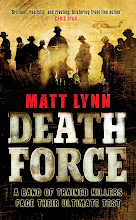The most interesting thing happening in writing right now is the way the Kindle is breaking down old barriers. It is creating a lot of new space for writers, and, rather surprising, it is also bringing back some old forms.
One is the long essay, which is really just a recreation of the polemical pamphlet. The other is the e-novella, which is really the heir to pulp fiction.
Pulp fiction flourished as the ‘penny dreadfuls’, lurid, sensationalist tales that filled Victorian and Edwardian railway bookshops in Britain, and in the ‘pulp fiction’ story magazines that were hugely successful in the US right up until the 1960s.
Both specialised in genre fiction, usually written fast by highly professional writers. The stories ere disposable, shocking, and attention-grabbing. And they were sold cheaply.
Look at the Kindle charts and you’ll see a lot of stuff is very similar. Lots of fairly sensationalist cheap fiction.
In effect, new technology has bought pulp fiction back to life.
The interesting point I think is that some great writing emerged from that tradition. The Victorian penny dreadfuls contained plenty of rubbish and so did the American pulp magazines.
But those magazines also provided the foundation for some great writers. Raymond Chandler, Zane Grey, Rider Haggard, and many others. Upton Sinclair was at one point knocking out 8,000 words a day for the pulps.
They allowed writers to write a lot, to develop characters, and push genres. At the moment, Kindle is allowing writers to do something very similar. There is a lot of rubbish, of course, but I suspect when we look back in fifty or a hundred years time we will decide that a lot of the most interesting work is being done for Kindle, just as it was in for the pulps in the past.
Saturday, 19 November 2011
Subscribe to:
Post Comments (Atom)









No comments:
Post a Comment